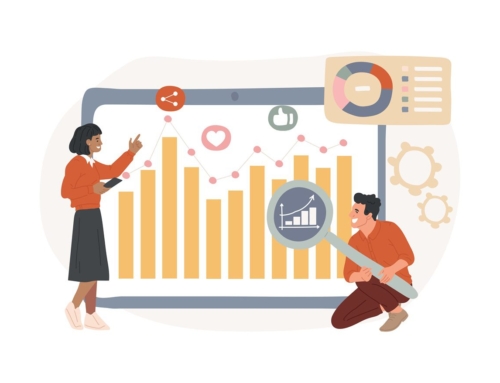Five trends in digital audio advertising are pointing the way to the future. Learn how you can leverage them in your marketing campaigns.

Promoting brands to audiences while they are indulging in their favourite digital audio streaming habits is big business with a big reach.
There are over 5 million podcasts globally, with over 500 million podcast listeners tuning into their favourite episodes. Adult Spotify users spend 51 minutes each day listening to audio, outpacing the time spent on most social media platforms.
Research shows that advertising via radio, podcasting and streaming audio services was more effective than other digital, social and TV advertising. These audio platforms outperformed others in consumer attention, brand recall and brand choice uplift.
Leveraging digital audio ads can help you target audiences within your desired demographics and deliver compelling ad campaigns that drive up brand awareness and reach.
What is digital audio advertising?
Digital audio advertising allows marketers to connect with audiences across various devices and platforms in any context, all day long. It’s a growing opportunity for businesses to reach potential customers with targeted messaging through channels that attract impressive numbers of users.
It includes any advertising that reaches consumers while they listen to digital audio content online. Listeners might hear targeted ads between songs on various music streaming platforms, in online radio programs or during breaks in podcast episodes.
Millions of people are tuning in to online audio content. They often listen while busy with other tasks, such as driving, walking and doing housework. They are a huge, highly engaged and appealing audience for marketers looking to expand the reach of their advertising efforts.
Benefits of digital audio advertising
Digital audio advertising offers benefits for brands that include:
- High listener engagement
Consumers demonstrate significant attention to digital audio ads embedded within podcasts and music streams, indicating high listener engagement with audio content. They’re also less likely to skip ads while listening, increasing the chances of brand recall.
- Automation and efficiency
Digital audio ads can be programmatically placed across various platforms, enabling precise targeting and efficient campaign management. Programmatic ad buying can strengthen your ability to deliver ads at scale and make campaign decisions based on real data.
- Broad audience reach
Audio is easily accessible to audiences in most markets. With many consumers using free, ad-supported audio streaming services, digital audio advertising offers substantial potential reach across popular platforms.
- Convenience and accessibility
Advertising without visuals means users can be reached more moments of the day. Digital audio advertising reaches consumers during daily activities, such as driving, exercising and cooking, providing a convenient way to connect with audiences as they carry out their daily routines.
- Cost-effectiveness
Making the most of your advertising spending matters when resources are slim. Compared to video production, audio ad creation is more budget friendly, making it an appealing option for advertisers with limited resources.
- Effective conversion rates
Many podcast listeners are loyal to their programs and aren’t opposed to hearing audio ads. Some podcasts even offer ads read by the hosts for a personalized touch. Many will remember brands and explore purchases after hearing audio ads.
Overall, digital audio advertising presents a compelling opportunity for brands to connect with their audiences in meaningful ways.
5 digital audio advertising trends to watch in 2024
Clearly, audio ads have potential and should be considered in your marketing strategy. But what format will work for you? Keep an eye on these industry trends that could impact your strategy in the months ahead.
1. New podcasting platforms
Podcasts have shown their value to marketers looking to reach new and expanded audiences. However, fast growth in any market typically encourages competition, which provides more opportunities for marketers to get into audio advertising in different ways.
Listeners may use different platforms, such as Spotify, Apple and Google Podcasts, to access the podcasts they want to hear. Each platform may offer distinct opportunities for advertising impact.
Watch for new platforms and exclusive content. Compare the options for reaching relevant listeners through custom or programmed ad campaigns.
2. Innovations in podcasting formats
While traditional podcasting with recorded episodes isn’t going anywhere, content creators will look for new ways to stand out in an increasingly crowded market. These ideas can spark new opportunities for you to reach consumers with your ads.
When planning audio ad campaigns, consider a variety of content types, from live broadcasts and serialized content to interactive storytelling. Each may attract unique audiences that could open up interesting opportunities for new ad campaigns.
Look for new and unique ways to reach your audiences and consider testing formats, shows or branded content collaborations with podcasters.
3. Greater demand for transparency around data
Most digital platforms collect data from their users by employing analytics or using tracking URLs. Some of these tactics are innocuous, while others can feel intrusive to consumers, who are becoming more privacy aware.
Moving towards a first-party perspective provides advertisers with more control over data privacy and compliance, increasing the impact of their audio advertising efforts. Transparency matters to your listeners. Brands should openly communicate how their audio advertising campaigns gather, use and safeguard data. Any partnership with digital audio platforms should include a reliable framework to allow listeners to understand, manage and offer consent for data sharing.
First-party data is a significant concern, with most countries advancing privacy legislation and strict rules. If you’re collecting or accessing data via your digital advertising, be sure you’re aware of and following the rules in your region.
4. Evolving capabilities of programmatic advertising
Programmatic audio advertising offers brands targeted ad delivery to engaged audiences, leveraging automated systems for efficient campaign management and valuable data analytics.
These ads are seamlessly inserted into digital audio content, whether it’s podcasts, streamed music or digital radio, providing opportunities for pre-roll, mid-roll and post-roll placements. Programmatic audio ads enable quick and easy access to listeners, allowing advertisers to enhance engagement, refine targeting and optimize campaigns based on accurate and timely data.
Partnering with a trusted resource to optimize results from programmatic ad placements can help you get the most from your ad budgets and ensure you reach the right audiences.
5. Voice ads and the growing adoption of smart speakers
Voice ads are delivered to smart speakers through platforms like Amazon Alexa, Google Assistant and Apple Siri. Specific wake words or commands trigger these ads and can take the form of sponsored messages or voice search results.
The potential of voice ads lies in the intuitive and conversational way search results are offered to users. As the adoption of these devices grows, so will users’ habits of relying on them for quick searches for information and seamless interactions.
The goal is to reduce friction between the consumer’s impulse or desire and the discovery of your brand or a purchase.
The best digital audio advertising strategy will help you craft compelling and targeted audio advertisements, enhance your brand’s credibility and strategically position your business for success. Ready to begin? Book a consultation with a Postmedia expert to learn more.

